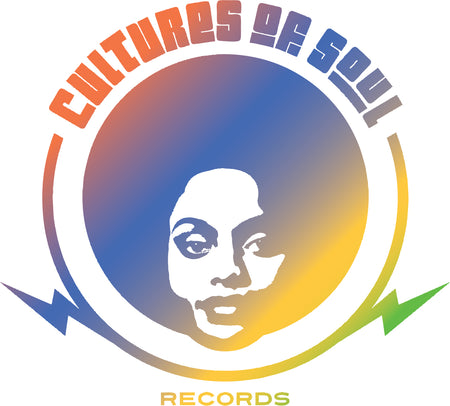
“In 1984 the world would be at war,” sings Neville Nash on ‘Breakdown’. The song’s apocalyptic lyrics may not have been a conscious reference to South Africa’s volatile political situation at the time (according to the artist) as much as a nod to the long-awaited arrival of that Orwellian year, but in reality the country at the southern tip of Africa was quickly going up in flames.
Opposition was mounting both locally and abroad to the system of apartheid that attempted to segregate by law and by force all aspects of life in South Africa according to race and ethnicity. Central to apartheid ideology and policy was the notion of separate development, which held that the interests of all groups were best served by keeping them separate along prescribed racial and linguistic lines. To implement this, the government attempted to exercise control over public life and culture.
As the popular struggle to defeat apartheid mounted, the mechanisms of state power grew increasingly brutal, fueled by religious conviction and Cold War paranoia. By the mid-1980s, a popular uprising was underway. A state of emergency was declared on July 20, 1985, putting parts of the country under martial law. This was lifted in March of 1986, only to be reinstated throughout the whole country a few months later on June 12, 1986 - a decade nearly to the day after police opened fire on protesting Soweto schoolchildren on 16 June 1976, bringing the brutality of apartheid to the world’s attention.
The militarization of the state during the ‘80s made it difficult for South African musicians to practice their craft. Laws restricted black musicians from moving freely in urban areas and prevented artists of different races playing together (and those of the same race playing to mixed audiences). At the same time, the government had long used music to promote apartheid by actively promoting certain music that was seen to encourage separate development and censoring music that did not. Its primary means of doing both was the South African Broadcasting Corporation (SABC), particularly its network of radio stations, each aimed at specific language groups.
The combination of repressive laws and government interference in the South African music industry made it impossible for musicians to write, record and perform whatever and wherever they wanted. Besides a creative climate fraught with political and financial restrictions, intimidation at the hands of police was common, with touring around the country (let alone beyond its borders) proving a risky endeavor.

“We were slaves in disguise!” musician ‘Funky’ Masike Mohapi told me in December of 2009. “Apartheid killed us, man, it killed us. I’m telling you, if it was not for apartheid, I’m sure most of us would have gone far, very far…”
Incongruously, the local recording industry was coming into its own in the ‘80s, with companies like Gallo, EMI and a growing number of successful independent labels churning out millions of LPs for listeners who were embracing local artists, including those who successfully fused American soul music with local influences. By 1983, with the release of Brenda & The Big Dudes’ ‘Weekend Special’ (borrowing heavily from American funk acts BB&Q Band and Sharon Redd), the synth-fueled ‘bubblegum’ era had begun.

With the country’s black political leaders and organizations having long been banned, exiled, imprisoned or murdered, musicians emerged during this time as central figures in the anti-apartheid struggle, effectively using their music to educate and socialize (as well as entertain) the people. Their effectiveness in doing so culminated in 1985 at the historic Concert In The Park at Ellis Park stadium in central Johannesburg, which drew a mixed audience of well over 100,000 to enjoy music by South Africa’s biggest black, white and mixed race musicians.
Internationally too, musicians played a central role in the fight against apartheid, with many writing anti-apartheid songs (such as the collaborative single ‘Sun City’ in the USA in 1985) or putting their weight behind anti-apartheid causes (such as the concerts at Wembley Stadium in London in 1988 and 1990).
The structure of the global music industry, with South Africa at its periphery – aided by the long-running cultural boycott (enforced by the United Nations and various anti-apartheid organizations around the world) prevented the vast majority of South African pop music of that era from ever being heard outside the country (with several notable exceptions). Today most of this music has never been digitized and risks being lost to future generations.
The songs selected for this compilation don’t necessarily represent the biggest hits of the era (some were; others tanked). They are simply a small sample of South African pop music from the first half of the decade, by key artists in the often-overlooked story of South African music. From the electric soul of The Cannibals and Harari to Neville Nash’s funked-up makeover and the rise of synths and drums machines with new stars like Benjamin Ball, Al Etto and Don Laka, these are songs that remain so fresh today that they demand to be heard – on vinyl.

These are also songs that would soon usher in a host of imitators. During this time the influence of American pop acts – most notably Michael Jackson and Kool & The Gang – on South African pop music is obvious. Lyrics were typically in English (to ensure radio play across the various ‘ethnic’ radio stations), basslines were funky, and producers strove to use the latest synths sounds of the day.
This would soon change in the second half of the decade, when local artists and producers managed to craft a more indigenous sound and local artists succeeded in outselling their American counterparts for the first time. These tracks, hand-picked from between 1980 and 1984, are where it all began.
Dave Durbach / DJ Okapi
Johannesburg, June 2016
Purchase - Boogie Breakdown: South African Synth Disco - 1980 to 1984 on CD and 2LP
Stream - Boogie Breakdown: South African Synth Disco - 1980 to 1984 on CD on Spotify

